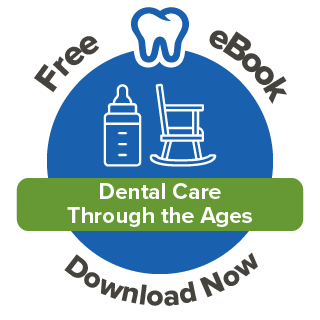By Brooke Ellis on Nov 28, 2016 @ 10:15 AM
If you have coverage under a dental insurance plan, you have a reason to smile. Not only does dental insurance offer better access to routine care like cleanings, you’ll have some financial protection in case of an emergency or major work.
If you have insurance, and you need an X-ray, a crown or another dental procedure, you might owe a flat co-payment or a percentage of the dentist’s charge, depending on the type of dental plan you have.
But what happens if you are covered under more than one plan?
What is coordination of benefits in dental insurance coverage?
This comes into play when a patient filing a claim is covered under more than one dental plan. An example is when a husband and wife are covered by their respective employers’ insurance plans.
Typically, the plan in which you are the main policyholder is your primary. Your secondary plan is that under which you are enrolled as a dependent.
If your children are enrolled in multiple plans, the “birthday rule” determines which plan is primary. The insurance plan of the parent whose birthday occurs first in a calendar year (month and day) would be primary for covered children.
Exceptions to the birthday rule include custody arrangements, court order, or whether one parent has a group plan versus individual.
If you have more than one plan and both plans allow for it, your insurers can “coordinate the benefits” (COB) if you file a claim.
This does not mean you have double the coverage. Rather, your plans will work together to likely reduce your out-of-pocket amount.
How do insurers coordinate benefits?
Your insurance providers discover which plan is primary and which is the secondary. Depending on your plan type, rules for designating primary and secondary plans might be set by your state or could fall under federal guidelines.
Your primary plan covers claims as if there were no secondary plan. In other words, the primary plan will pay for the same expenses as if you did not have secondary coverage.
In a traditional COB scenario, you would receive up to 100 percent of your costs for a claim from a combination of your primary and secondary plans.
But coordination of benefits can occur in different ways. The American Dental Association describes different types of COB scenarios.
Imagine you need a root canal that costs $1,000, and your primary dental plan will cover 80 percent of the cost, which is $800. That leaves a $200 balance.
Your secondary plan would typically supplement your primary plan by paying either its normal benefit or your out-of-pocket costs—typically, whichever is less—or the amount allowed under the plan’s coordination of benefits provision.
It is important to keep in mind that your insurance plans will coordinate coverage up to the allowed amount for a procedure. In other words, a patient cannot profit from having more than one plan.
If you do have more than one dental plan, coordination of benefits can often reduce your costs. Review your policy language for the specific rules, or, if you are in the market for coverage, find out if your prospective plans allow for COB and what the rules are.





comments